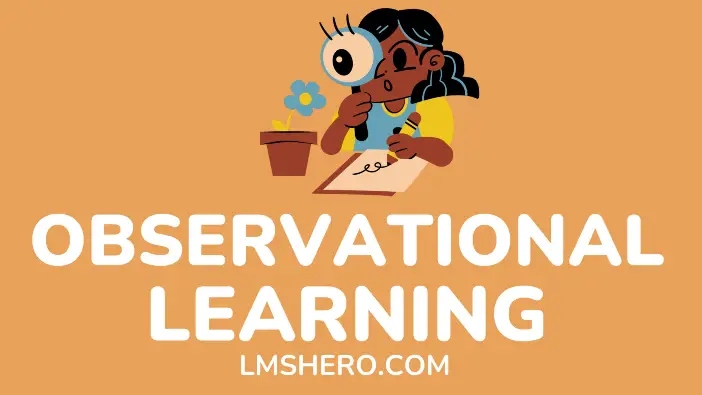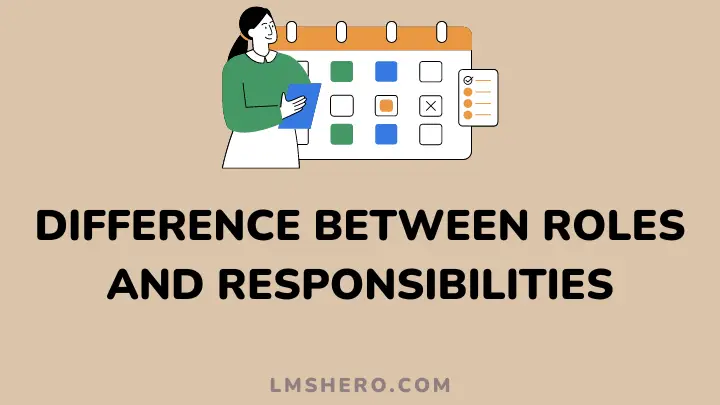The world is a social place and we all learn through observation. Through observational learning, we acquire new skills and knowledge.
Both children and adults undergo observational learning in their immediate environment. Children learn habits and social skills from their parents, siblings, and those they see around them. They also pick habits from social gatherings like schools and places of worship.
In the same vein, for most adults, their personality traits and character are a culmination of habits picked from observations within the environment, consciously or unconsciously.
Finally, observational learning is as important as other forms of learning. To learn more about observational learning, the states of observational learning, and its benefits, kindly read along.
What Is Observational Learning
Observational learning can be defined as the process of internalizing skills, knowledge, and attributes by observing the behavior of others.
It also involves modeling other people’s attitudes, behavior, or skills and replicating them.
Lastly, we can describe observation learning as the process of learning by watching other people.
Observational learning plays an important role in every individual. We voluntarily and involuntarily undergo this kind of learning because it is a key process of socialization.
Children are known to be more observational learners than adults because they often learn how to behave and respond to life situations by modeling their parents, siblings, and close family members.
Theory Of Observational Learning
Albert Bandura, a physiologist, claimed that children learn desirable and undesirable characteristics through observational learning. He suggests that the child’s environment, cognition, and behavior contribute to the learning process.
In his theory of social learning, Bandura suggested that people could learn without having direct experience. Learning can occur through the observation of others.
Bandura used a doll named Bobo to demonstrate how observational learning works especially among children.
His studies show that if children are exposed to an adult who treats the doll violently and the adult is rewarded, they also become aggressive with the doll as observed from the adults when they are left to play with the doll.
On the other hand, if the adult is friendly to the doll in the presence of the children, the children also exhibit the same behavior as the doll when alone.
The results show that children are more likely to behave aggressively with the doll when there is a reward or no consequences attached to such behavior.
There are three basic models in observational learning which include live models, symbolic models, and verbal models.
- Live models are those we see and learn from physically. We demonstrate their attributes in person because we see them directly.
- Symbolic models are found on television shows, books, and video games. They are characters that can influence our behavior through the attributes they exhibit in their way of life.
- Verbal models do not act out their behaviors. They also tell the learner to exhibit a certain behavior and he or she carries on with it. This is common in sports.
Stages of Observational Learning
This form of learning does not mean an individual will act out all he observes in the environment. Instead, the learner has a right to choose whether to engage in or avoid certain types of behavior.
This choice comes when learners have a mind of their own to determine the benefits or consequences of such learned behavior. Observational learning occurs in four main stages.
1. Attention
Learning cannot occur without attention. This is why attention is the first and major step of observational learning. Everyone tends to be sensitive to the happenings within their immediate environment.
The learner observes the behavioral traits exhibited by the model. However, in the case when a learner is ill, distracted, or sleepy, he may lack the ability to pay attention. Furthermore, the model must be attractive enough to command the attention of learners.
Studies have shown that learners are more attracted to models that are physically appealing, prestigious, and influential. They are also attracted to people who share the same similarities with them.
Furthermore, if the model is rewarded or sanctioned for their behavior, the learner takes note.
This is why parents are very influential models; other models that can connect to these learners include media personalities and celebrities.
The negative impact of this stage is that learners may observe the bad attributes of some models who are not punished for their bad deeds.
2. Retention
After paying attention to the behavior traits of the model, the next stage is retention.
The learner must be able to remember what he or she viewed from the model. If the learner is unable to recall what he or she learned in the first stage, they would not be able to reproduce such behavior.
On the other hand, the learner would be able to remember the behavior traits if he or she can mentally or physically rehearse the model’s behavior.
3. Reproduction
If the learner were able to remember the information, replication of that knowledge would be the next stage of observational learning. It is important to note that not all behavior types will be exhibited in the same way it was internalized, however, the similarities will be obvious.
This is because every individual has a unique way of learning and imitating certain characteristics.
Furthermore, the physical and mental ability of the learner may not be on the same level as the model to copy the behavior that was imbibed.
For example, a child that wants to be an athlete would not be able to do almost everything a professional athlete is known for, he or she must reach a certain age and attain a level of mental and physical strength to become exactly or better than that athlete attains.
4. Motivation
Motivation is the last stage here. After the learner has acquired new behavior, he or she needs the motivation to carry out this trait. If there is no reason to imitate this new behavior, the three early stages of learning would not have enough effect.
Motivation works with incentives and it may come in the form of reward or punishment.
An individual is less likely to carry out a new behavior if there is a sanction attached to it, on the other hand, if there is a reward for such behavior, this will motivate the learner to exhibit the new trait.
Influences On Observational Learning
For observational learning to be very effective on an individual, the model must possess a certain level of influence on the learner. Observational learners imitate the behaviors of the following category of models.
- Those who nurture us, for example, family
- Individuals who reward our actions
- People who hold a level of authority in our lives
- Peer groups
- Individuals in high social class
Examples Of Observational Learning
Observational learning is part of everyone including children and adults. Here are some examples below.
1. Observational learning in children
A boy who has an athletic father can imitate the behavior of his dad. When the father takes a morning jog every morning, the boy may join in the exercise occasionally till he can make his runs on his own.
A student who does not want to submit her assignment on time and sees another student receive punishment for the same behavior may refrain from such to avoid punishment.
A child who watches a football game may know exactly what to do with it without any experience.
2. Observational learning in adults
When an adult goes to a foreign country for the first time, he quickly observes the culture of the host country and tries to adjust to it. For example, Using chopsticks to eat for the first time in China.
A new employer observes the behavior of her team lead in the marketing department and she tries to become a better employee by being a team player and improving her organizational skills.
Finally, a new customer going to an eatery for the first time observes how regular customers place their food orders and make payments while waiting for their packages to be ready. This will teach the new customer how to fit in the right way.
Benefits of Observational Learning
1. Ability to learn new skills
Observational learning can allow both children and adults to learn new skills. By observing the models around him or her, the individual can adjust to his or her school or work environment.
Students can learn interpersonal skills on how to relate with other students while adults can develop their interpersonal skills in the workplace to meet the needs of both their co-workers and clients.
2. Encourage good behavior
This is more effective for young people. When there is a reward for positive behavior, children will always want to imitate such traits.
For example, a student sees her classmate rewarded for being at the top of her class and she is inspired to act in the same way to earn the same reward in the future.
3. Encourages social interaction
Observational learning helps to build the self-esteem of children. Models who are outspoken and daring will always influence the attitude of children who look up to them.
Good self-esteem will allow children to see themselves as important as their peers when they interact socially.
4. Encourages cultural integration
Observational learning also allows individuals to fit into the cultural setting of a place. It is part of the socialization process.
Without observational learning, it will be difficult for an individual to overcome culture shock, especially in a foreign country.
Culture shock is the disoriented feeling a person experiences when he or she is suddenly exposed to a different way of life.
5. Improves memory
When an individual can observe and imitate the behavior of his or her models over time, it helps their memory to recall information better.
Children will good observation skills are better leaders and problem solvers. They can be able to create solutions with their imaginations.
Negative Impacts of Observational Learning
1. Promotes vices
When children are exposed to models that do not promote good behavior and are still not sanctioned for it, children tend to imitate such characters.
It is easy for a television character to influence the behavior of children which is where a lot of negative information and habits are acquired.
Furthermore, if a child is exposed to an aggressive environment, the child could also turn out to be very aggressive especially if someone in the family exhibits traits of aggression.
Parents and guardians should, therefore, ensure that their children are not exposed to negative media personalities.
In addition to this, children should witness more peace than aggression and this will help the child to be friendlier with his or her peers.
2. Poor models
When a child does not have a good model in his or her life, such a child will exhibit more negative behaviors than positive behaviors, especially if there are no punishments.
The model is an important part of the child’s life and he or she holds a lot of influence on the child.
FAQs
Is observational learning a good form of learning?
Particularly among children, observational learning is a very important aspect of their character growth and development. It helps learners to develop new skills and avoid consequences.
What do you learn from observation?
You may learn how to jump, talk, fight, etc. from observation.
Is observational learning similar to stage performance?
They are not the same.
Observational learning affects your behaviors and skills while rehearsing for stage performance only exhibits the character you are portraying but it does not affect your behavior.
Summary
To round off this article, we have gone through the definition and history of observational learning.
You also have an understanding of the four major stages of observational learning which are attention, retention, reproduction, and motivation.
The benefits and negative effects of observational learning are well outlined as well as some examples.
Observational learning is effective for learners, especially young learners who want to develop useful skills and knowledge that will help them in the future.
As an adult, it is important to be the right model for children so that they can pick up good habits and be useful to society.
Finally, you can check the article on types of learners to learn more about different learning types.
Thanks for reading.







